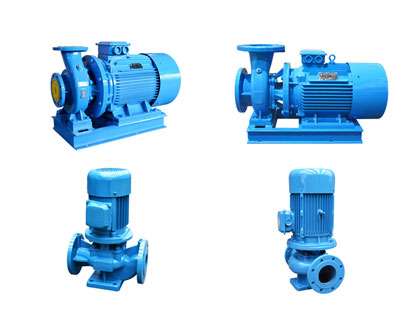Introduction
In the world of fluid mechanics and control, pump serve as indispensable workhorses, ensuring the seamless transfer of fluids across various industries. Amidst the assortment of pumps available for buying, Monoblock and self-priming pumps stand out due to their specific features and flexibility.
This comprehensive blog delves into the workings, comparisons, and unique aspects of these two pumps, assisting you in choosing the ideal pump when you decide to buy pumps for your requirements.
Understanding Monoblock Pumps
Monoblock pumps, also known as single-stage pumps, stand as the epitome of simplicity and compactness in the broad sphere of centrifugal pumps. These pumps integrate the motor and pump into a single unit, bypassing the need for extra coupling devices and resulting in a compact, space-saving solution.
They are frequently the first choice for operations demanding high flow rates and moderate discharge pressure. You can see monoblock pumps in action in various settings, such as:
- Domestic water supply: Monoblock pumps are popular in residential buildings for their high flow rates, effectively meeting the water demand of multiple households.
- Agriculture: Due to their capacity to provide substantial flow rates, farmers and agricultural businesses often use these pumps for irrigation purposes.
- Small-scale industries: Industries such as textiles, paper, and food processing that require moderate pressure and high flow rates regularly employ monoblock pumps.
The distinguishing feature of monoblock pumps lies in their seamless operation, which is attributed to a few key factors:
- Direct coupling: The pump and motor in a monoblock pump are directly coupled. This design eliminates alignment issues, ensuring smooth and efficient operations. Misalignment in pumps can lead to increased wear and tear, reducing the pump’s lifespan. The direct coupling in monoblock pumps mitigates this issue.
- Simple design: The monoblock pump design is minimalistic, integrating the motor and pump into a single unit. This simplicity reduces the chances of mechanical failure, increases the ease of operation, and simplifies the maintenance process.
- Fewer moving parts: The design of monoblock pumps incorporates fewer moving parts, reducing the risk of mechanical faults and decreasing the overall maintenance requirements. This feature, combined with the pumps’ ease of use, makes them an attractive choice for first-time pump buyers.
Understanding Self-Priming Pumps
In comparison to monoblock pumps, self-priming pumps offer their own unique set of advantages, especially in certain scenarios. These centrifugal pumps have a remarkable capability to eliminate air from the suction line by mixing it with the liquid present in the pump.
This unique characteristic enables them to self-prime, meaning they can start their pumping operations automatically, eliminating the need for manual priming.
The versatility of self-priming pumps allows them to be used in a multitude of applications across various sectors, such as:
- Industrial: Self-priming pumps are often found in industries dealing with volatile liquids or processes where air gets frequently entrained. They can handle mixtures of gases and liquids, making them ideal for industries like petroleum, chemical, or mining.
- Agricultural: These pumps are perfect for irrigation systems where air may be present in the lines at startup, reducing the potential for pump damage.
- Marine: In the marine sector, self-priming pumps are used for bilge pumping and other applications where water and air mixtures are common.
- Waste Management: These pumps effectively handle sewage and wastewater, which often contain large amounts of gasses.
One of the defining features of self-priming pumps is their ability to efficiently handle gases and airlocks, thanks to the following characteristics:
- Effective Gas Handling: Self-priming pumps can handle air or gas entrainment in the liquid being pumped. This feature makes these pumps ideal for operations dealing with volatile fluids or in situations where air entrainment is a common issue.
- Automatic Operation: These pumps have the ability to start functioning without the need for manual priming, offering ease of operation and minimizing startup time.
- Versatility: With the capability to manage a mix of gas and liquid, self-priming pumps can be used across various applications that many other pumps can’t handle.
Despite their many benefits, it’s important to note that self-priming pumps do have a more complex design and increased number of moving parts, leading to:
- Higher Maintenance: Due to their complexity, self-priming pumps may require more regular maintenance checks and servicing compared to simpler pumps like the Monoblock pumps.
Comparing Monoblock and Self-Priming Pumps
When it comes to comparing Monoblock and self-priming pumps, there are several key factors to consider:
- Operational Efficiency: Monoblock pumps often outperform other pumps in terms of operational efficiency, thanks to their direct coupling design. However, in operations prone to air entrainment, self-priming pumps, with their ability to handle air and gas, may be more efficient.
- Maintenance Needs: The simpler design and fewer moving parts of monoblock pumps usually result in lower maintenance requirements. On the other hand, self-priming pumps, due to their intricate design, might require more frequent checks and servicing.
- Installation Requirements: Although both pumps have user-friendly installation procedures, monoblock pumps, with their compact design requiring less space, can have a slight edge.
- Cost: While monoblock pumps are typically less expensive than self-priming pumps, the total cost of ownership should also include maintenance and operational costs. In these areas, self-priming pumps might incur higher costs due to their maintenance needs.
- Longevity and Reliability: With appropriate maintenance, both pumps can provide long-term reliability. However, due to the robustness of the monoblock design, these pumps often have a longer lifespan.
The Pros and Cons of Monoblock Pump
Buying pumps such as monoblock pumps come with several advantages:
- Exceptional operational efficiency due to the direct coupling of the pump and motor.
- Lower maintenance needs due to their simplified, compact design.
- Suitable for applications demanding high flow rates.
However, they do come with a few limitations:
- Limited self-priming capabilities.
- Lower discharge pressure compared to multistage pumps.
The Pros and Cons of Self-Priming Pump
When you consider buying pumps like the self-priming pumps, they bring several unique advantages:
- Ability to handle gases and airlocks effectively.
- No requirement for manual priming.
- Ideal for operations involving volatile fluids.
But they also come with a few drawbacks:
- Higher maintenance needs due to their complex design.
- Potential for higher long-term costs due to increased maintenance and operational expenses.
How to Determine the Right Pump for Your Needs
Deciding between a monoblock and a self-priming pump when buying pumps hinges on several factors:
- Requirement of the Operation: If your operation involves volatile fluids or is prone to air entrainment, a self-priming pump may be more suitable. However, for needs requiring high flow rates, a monoblock pump would be ideal.
- Budget: Monoblock pumps, being typically less expensive than self-priming pumps, can be a cost-effective choice for budget-constrained operations.
- Maintenance Capabilities: If your operation has limited resources for routine maintenance. A Monoblock pump, with its lower maintenance needs, could be a more efficient choice.
- Long-term Reliability and Operational Costs: Consider the total cost of ownership, including maintenance and operational costs. While self-priming pumps may have a higher initial cost, they could be more cost-effective in the long run, particularly in operations dealing with volatile fluids or frequent air entrainment.
Conclusion
Choosing between a Monoblock and a self-priming pump when you’re about to buy pumps requires careful consideration of your specific needs and operational conditions. Both pump types offer unique advantages and have potential limitations. By understanding their distinctive features and potential applications, you can make an informed decision that ensures efficiency and longevity for your fluid handling operations. Explore a wide range of pumps and fluid handling solutions at Business.emechmart to find the perfect fit for your requirements and achieve optimal performance in your operations.










